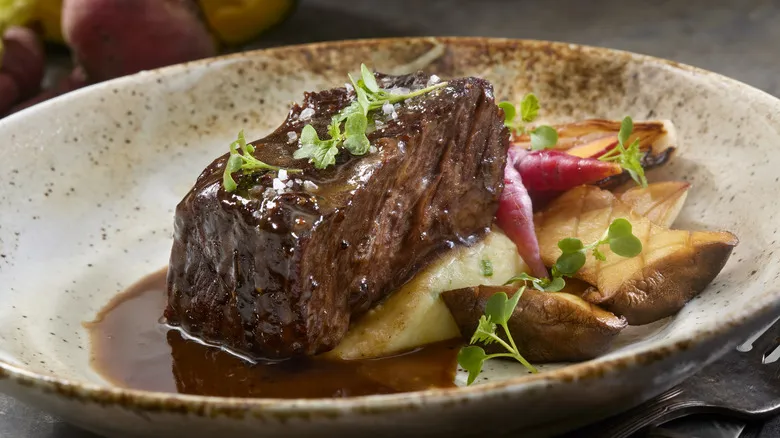Chuck flap hails from the shoulder
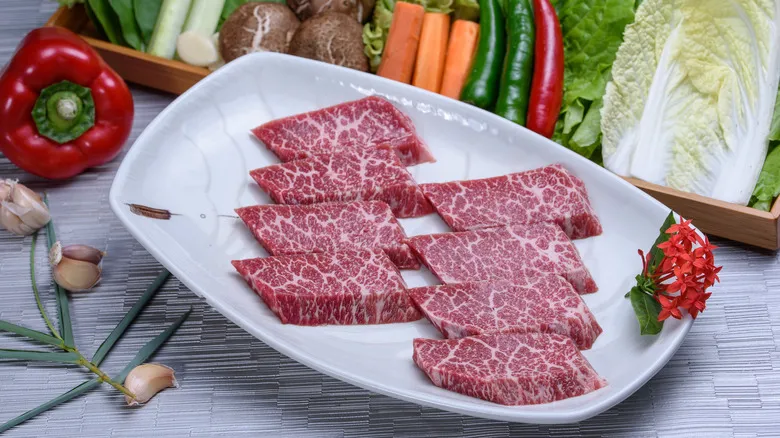
The chuck flap is a small portion taken from the shoulder. In general butchering terminology, it originates from the square cut chuck, a primal section that is among the first to be separated. This area includes the bones that link the front shoulders to the backbone. Once these bones are taken out, a sizable chuck piece is left, ready for further division.
One of the sections derived from this area is the chuck roll, from which the chuck flap is cut. This subprimal region also produces country-style ribs and the delicious Delmonico steak, made famous by the New York steakhouse of the same name. This area is adjacent to the ribs and includes some beef from the lower bones. Consequently, the chuck flap's similarity to its neighboring cuts may lead to it being referred to as boneless short ribs for convenience. While it is distinct, the beef shares similar culinary characteristics.
Slow cooking is particularly beneficial for this cut due to its muscle density. The tougher fibers are encased in collagen, which gives the chuck flap a chewy texture. However, with extended cooking, this collagen breaks down into gelatin, a process enhanced by the cut's rich marbling. As a result, the meat becomes tender, yielding a juicy bite.
Chuck flap shines in slow-cooked dishes
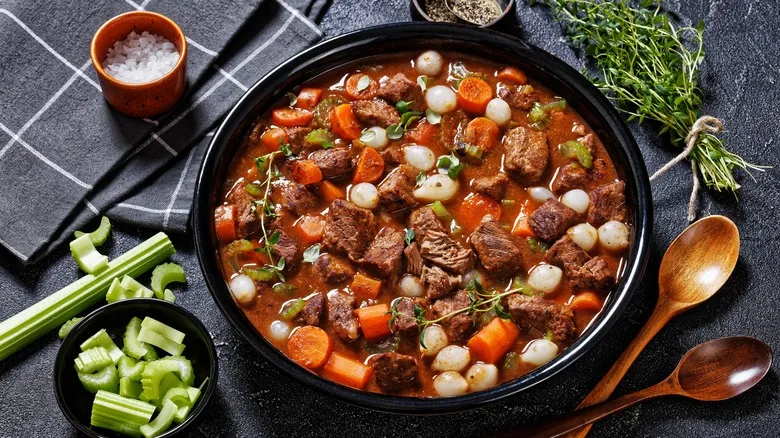
The chuck flap is an excellent choice for braising, as it is rich in fat and flavor that blend seamlessly with this cooking method. Its unique structure allows the meat to absorb marinades, seasonings, and braising liquids effectively, making it easy to create a dish bursting with flavor. It works wonderfully in slow-cooked classics like beef ratatouille or beef bourguignon. Alternatively, you can use it in a traditional braise with onions and mushrooms. It also makes a tasty stew, provided you avoid common pitfalls when preparing the beef.
Additionally, the chuck flap is perfect for shredded beef dishes like ropa vieja, as it easily pulls apart into tender strands. If you enjoy meat with a hint of pink, it can be roasted, though using the sous vide technique may help achieve the perfect level of doneness. In Korean cuisine, chuck flap is often grilled over medium heat for a brief period. When sourced from high-quality wagyu, this cut features exceptional fat marbling, which, when marinated, can help mitigate some of its tougher texture. However, to achieve that coveted tenderness, a slow simmer is recommended.
Recommended
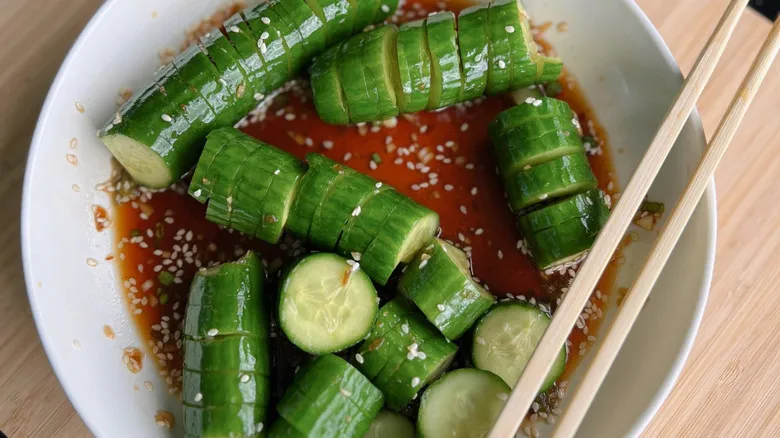
The Easiest Way To Spiral Cucumbers Without Any Tools
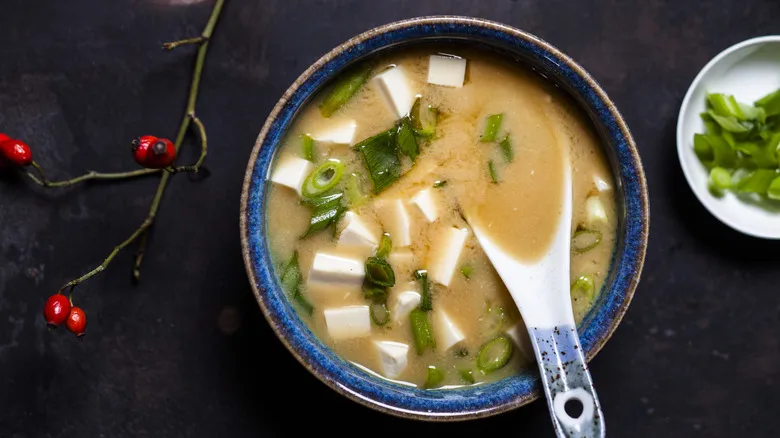
Instant Miso Soup Is The Start To The Easiest Breakfast Ever

Pickle Juice Is A Worthy Hot Sauce Alternative - Here's Why

Scorch Your Canned Tomatoes For Crave-Worthy Sandwiches
Next up

